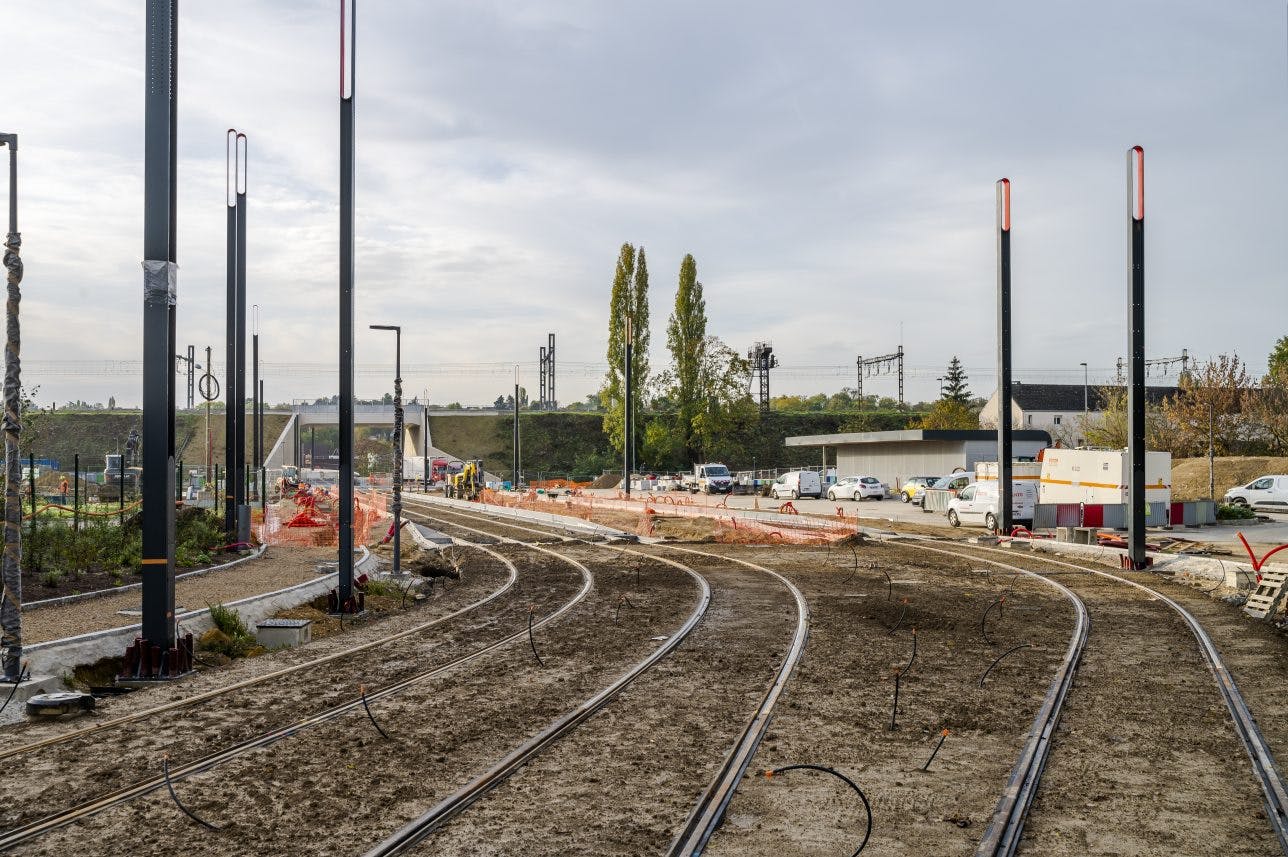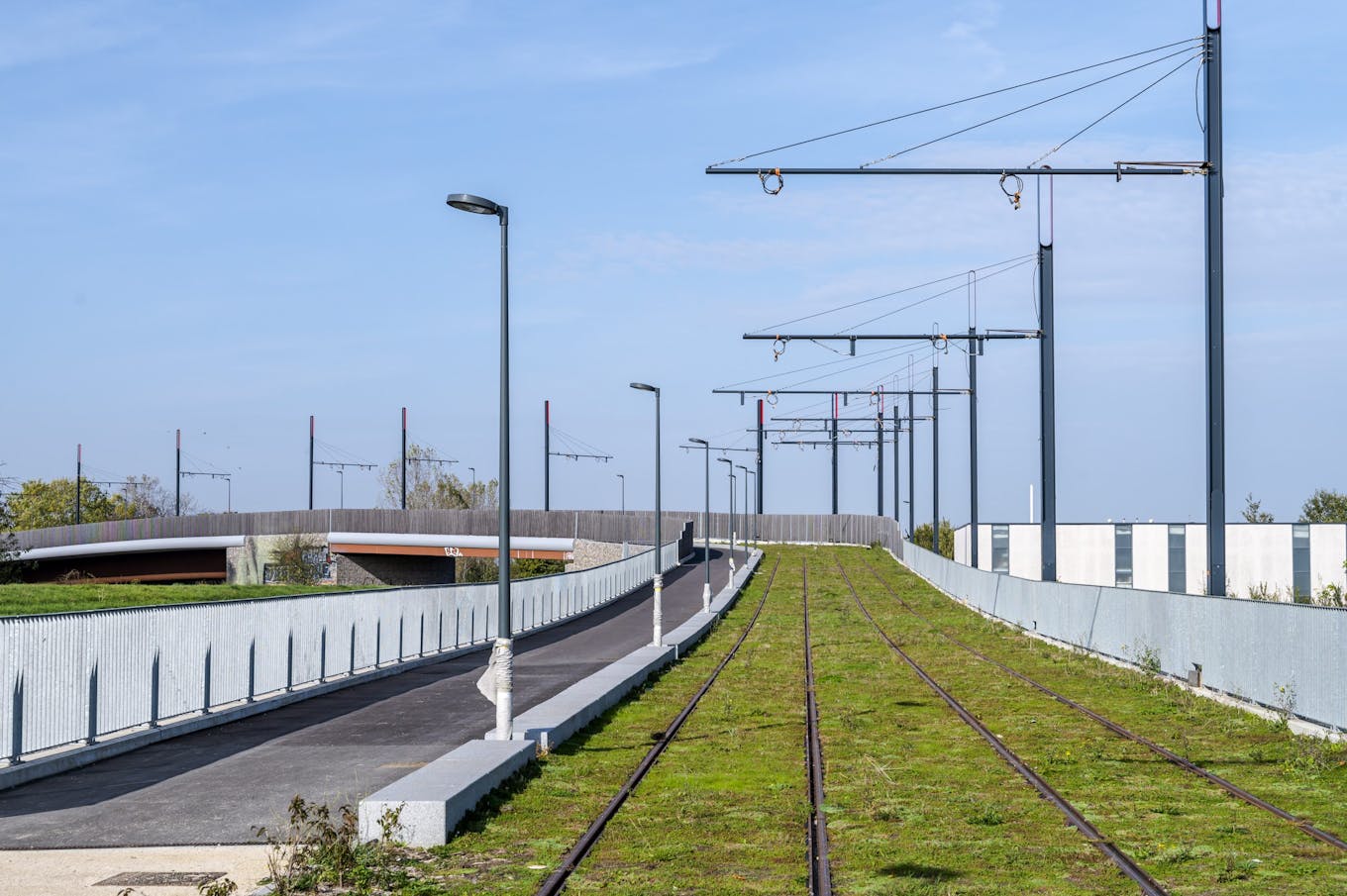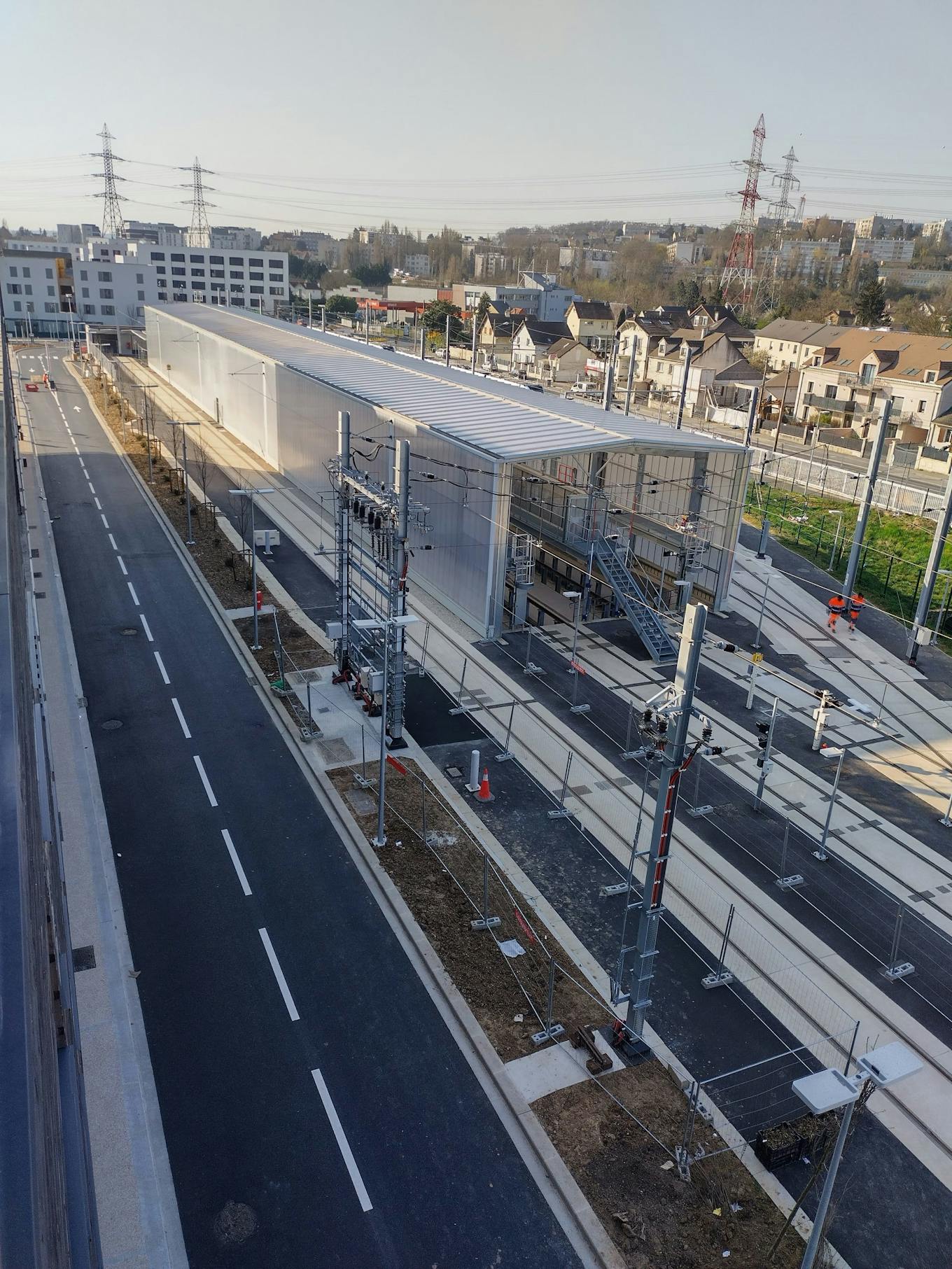Find out about the work
Understanding the work

Phase 1: Network rerouting work and preparatory work
- Concession works
Led by the concessionaires of the electricity, water, sewerage, gas and telecommunications networks, the aim is to move the networks located on the site of the future tramway platform and its stations. This will then allow not only the installation of rails, stations and cables, but also electrical circuits, and guarantee access and maintenance of the networks without disrupting the circulation of the T12 tram-train.
- Preparatory work
Other so-called "preparatory" works are also mandatory before starting infrastructure work: land acquisitions, demolition of buildings, land clearing, temporary road improvements, installation of temporary traffic lights in certain sectors. The project owners are responsible for its implementation.

Phase 2: Infrastructure work
It includes all the works necessary for the construction of the tram line and urban development:
- adaptation of the tracks and stations on the RER C between Massy and Petit Vaux to the passage of the T12 tram;
- construction of the platform and transport system between Épinay-sur-Orge and Évry-Courcouronnes;
- construction of bridges allowing the passage of the T12 tram-train;
- laying of the railway track: the rails will be laid on the platform;
- installation of overhead contact lines that will supply electricity to the T12 tram-train;
- layout and equipment of the stations: transport tickets dispensers and equipment (passenger information screens, benches, bins) will be installed in the stations;
- planting of trees and other vegetation around the platform;
- urban developments.
The infrastructure work also includes the creation of the workshop-garage located in Massy and Palaiseau.

Phase n°3: Tests and dry runs
The first step is to "energize" the overhead contact lines (LAC) that will supply the tramways with a direct current of 750 volts. Then, to test the infrastructure of the T12 tram-train, static and then dynamic tests make it possible to verify that all the technical elements are working and that the performance is as expected. The trains will run without passengers by stopping at stations and the power supply, speed increase and braking devices will be tested. During this stage, the trains will run at an average speed of 20 km/h.
During the dry run, traffic is carried out in real operating conditions (but without passengers) to ensure the proper functioning of the line and its safety. This will also help train new drivers.
A look back at the installation of the underpass at the new Champlan station
Two local agents are at your disposal to answer your questions.
Patrice and Gimmy are on duty at several points along the route and make rounds on the various construction sites. You can also write to them or call them, don't hesitate!
- Patrice:
Mail: [email protected]
Phone : 06 47 07 97 34
